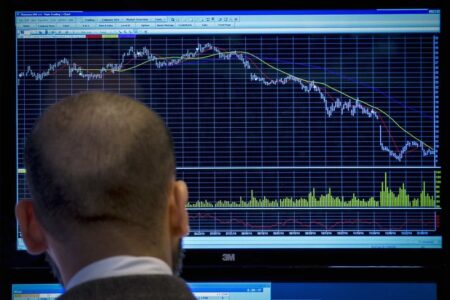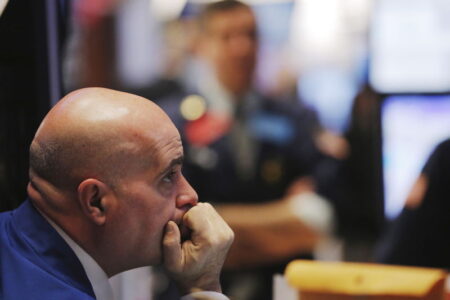© Reuters. FILE PHOTO:Traders work on the floor of the New York Stock Exchange (NYSE) in New York City, U.S., September 28, 2023. REUTERS/Brendan McDermid/File Photo
By Lewis Krauskopf, Shashwat Chauhan and Shristi Achar A
(Reuters) – The ended lower on Friday as investors digested implications of a U.S. inflation report for the Federal Reserve’s interest rate policy and adjusted their portfolios on the last day of a weak third quarter for stocks.
The S&P 500 and Nasdaq posted their biggest monthly percentage drops of the year, while all three major indexes had their first quarterly declines in 2023.
Data showed the personal consumption expenditures (PCE) price index, excluding the volatile food and energy components, increased 3.9% on an annual basis for August, the first time in over two years it had fallen below 4%. The Fed tracks the PCE price indexes for its 2% inflation target.
Stocks had pushed higher initially after the PCE report but then faded.
The data revealed a “better than expected but still elevated inflation picture,” said Eric Freedman, chief investment officer at U.S. Bank Asset Management.
Meanwhile, Freedman said, “we are at quarter end, and with quarter end comes all sorts of activities across both the stock and bond markets.”
The fell 158.84 points, or 0.47%, to 33,507.5, the S&P 500 lost 11.65 points, or 0.27%, to 4,288.05 and the gained 18.05 points, or 0.14%, to 13,219.32.
Among S&P 500 sectors, energy slumped about 2% and financials declined 0.9%. Energy remained by far the biggest-gaining sector for the third-quarter.
“Energy and financials have been up on a relative basis and they are feeling some rebalancing effect today,” Freedman said.
For the quarter, the S&P 500 fell about 3.6%, the Dow lost 2.6%, the Nasdaq shed 4.1%. In September, the S&P 500 dropped 4.9%, the Dow fell 3.5%, and the Nasdaq declined 5.8%.
The highly anticipated PCE data followed last week’s hawkish longterm outlook for rates from the Fed, which has rattled stocks as benchmark Treasury yields climbed to 16-year highs.
“Equity investors are finally waking up to the Fed and the Fed comments that it is going to be higher for longer, and there is an alternative to stocks,” said Paul Nolte, senior wealth advisor and market strategist for Murphy & Sylvest Wealth Management.
Investors were also watching Washington. Hardline Republicans in the U.S. House of Representatives rejected a bill proposed by their leader to temporarily fund the government, making it all but certain that federal agencies will partially shut down beginning Sunday.
Traders were also wary that a $16 billion JP Morgan fund, expected to reset its options positions on Friday, would be another source of market volatility.
In company news, Nike (NYSE:) shares jumped 6.7% after the world’s largest sportswear maker topped Wall Street estimates for first-quarter profit.
Declining issues outnumbered advancers by a 1.2-to-1 ratio on the NYSE. There were 54 new highs and 142 new lows on the NYSE.
On the Nasdaq, advancing issues outnumbered decliners by a 1.1-to-1 ratio. The Nasdaq recorded 46 new highs and 168 new lows.
About 11.3 billion shares changed hands in U.S. exchanges, compared with the 10.4 billion daily average over the last 20 sessions.
Read the full article here












